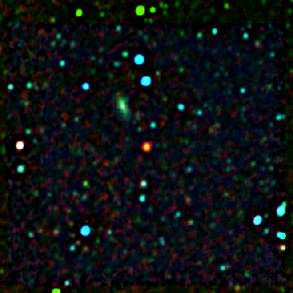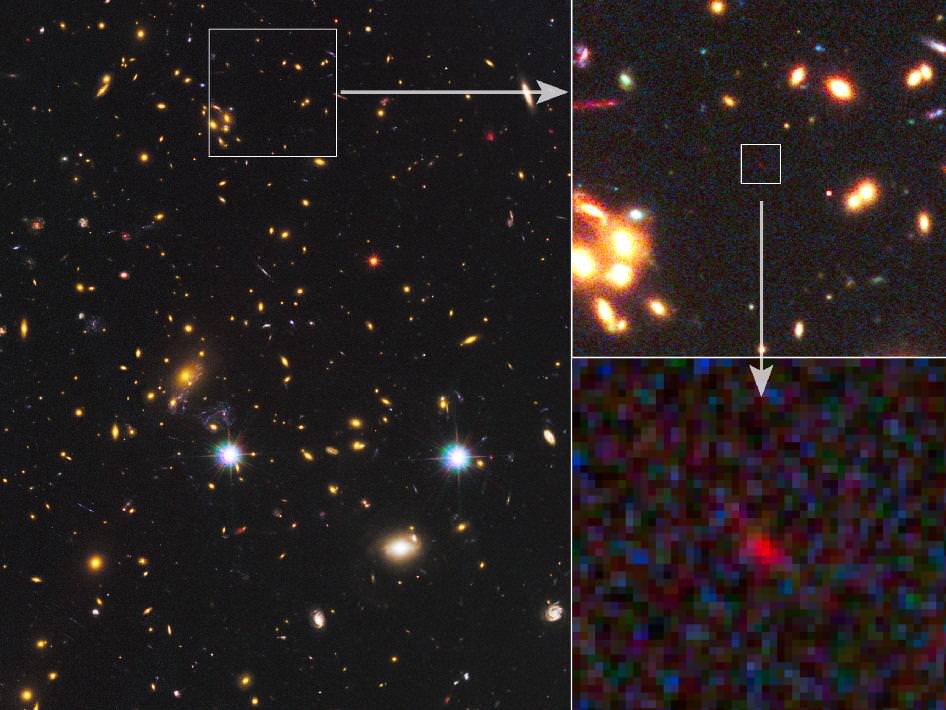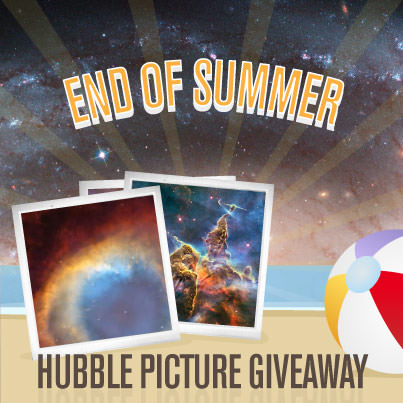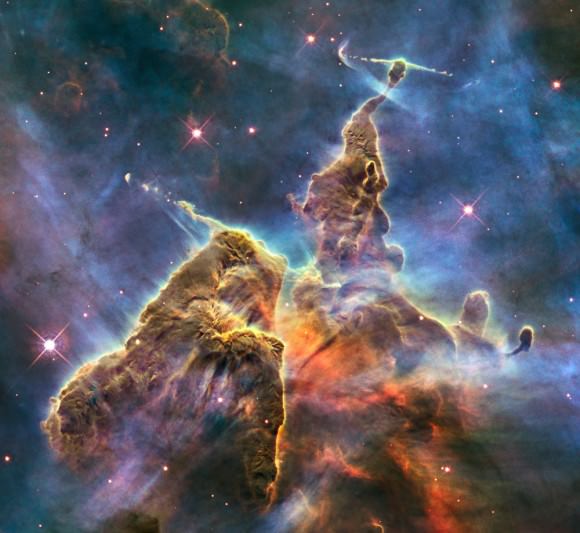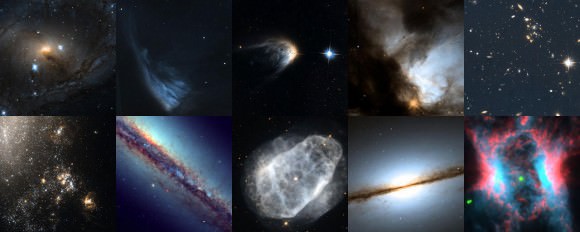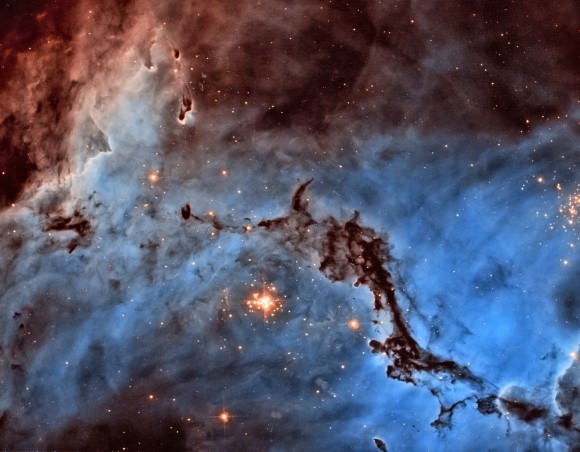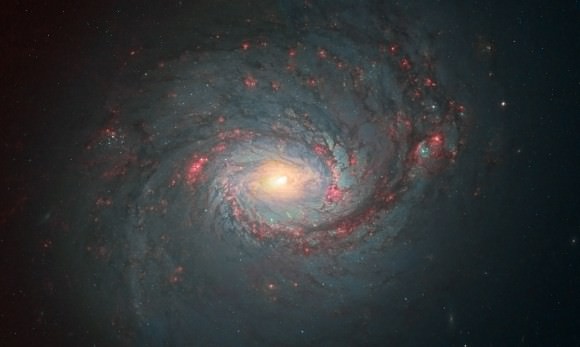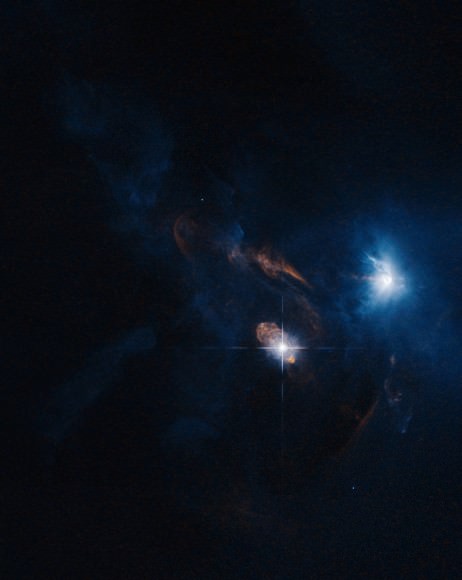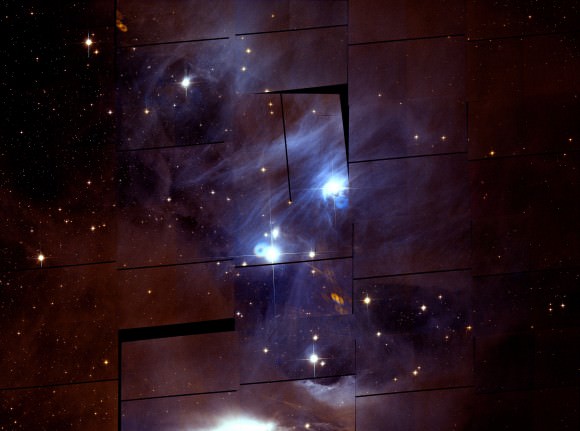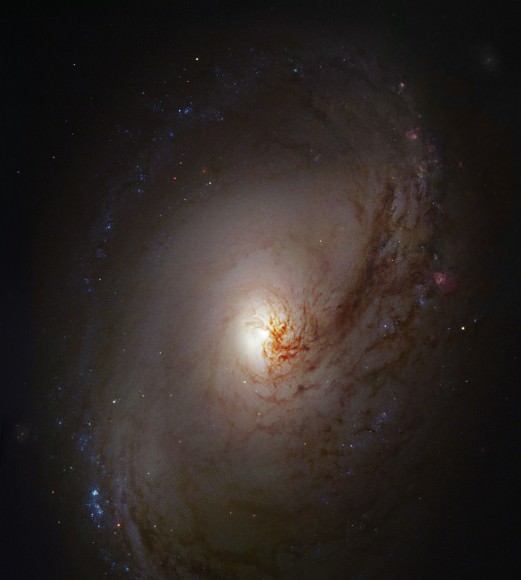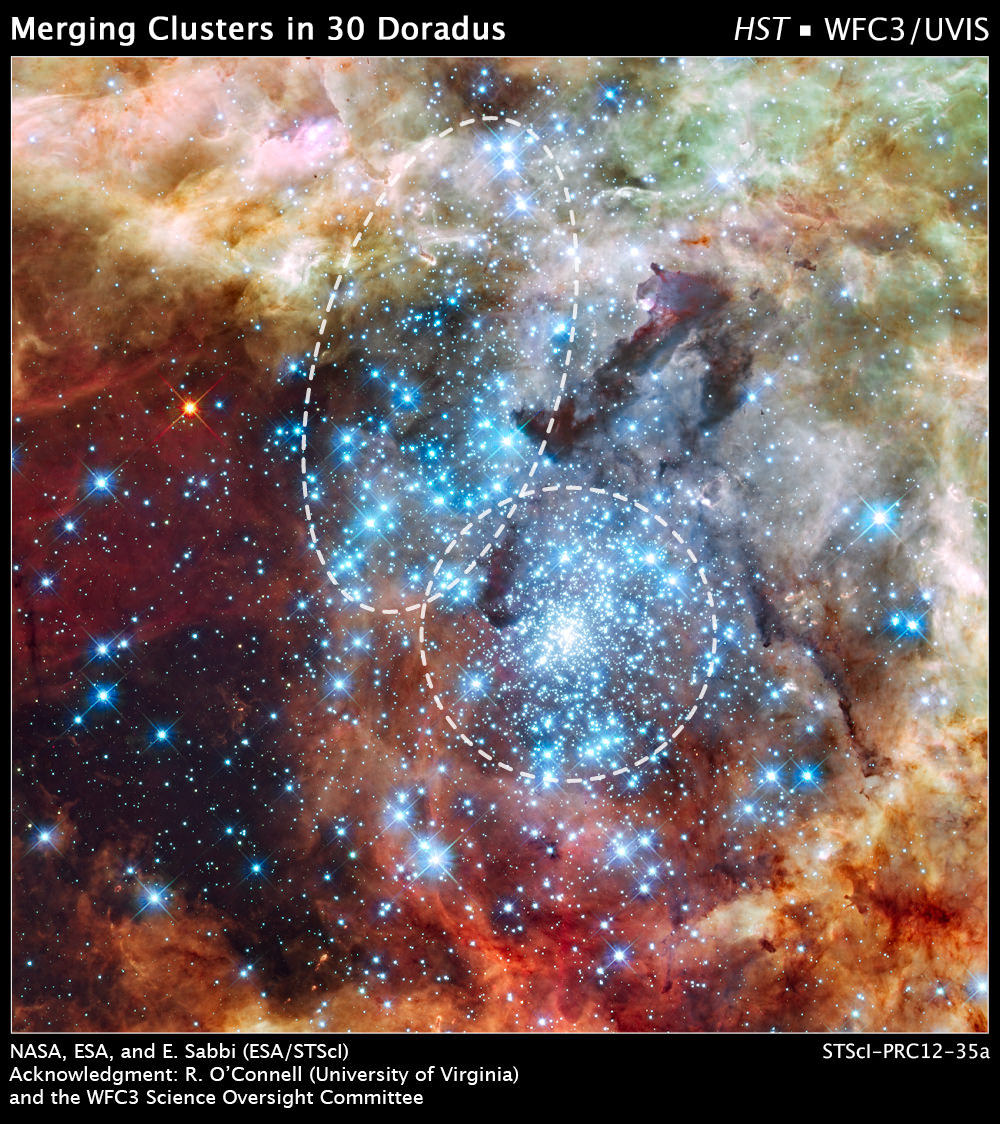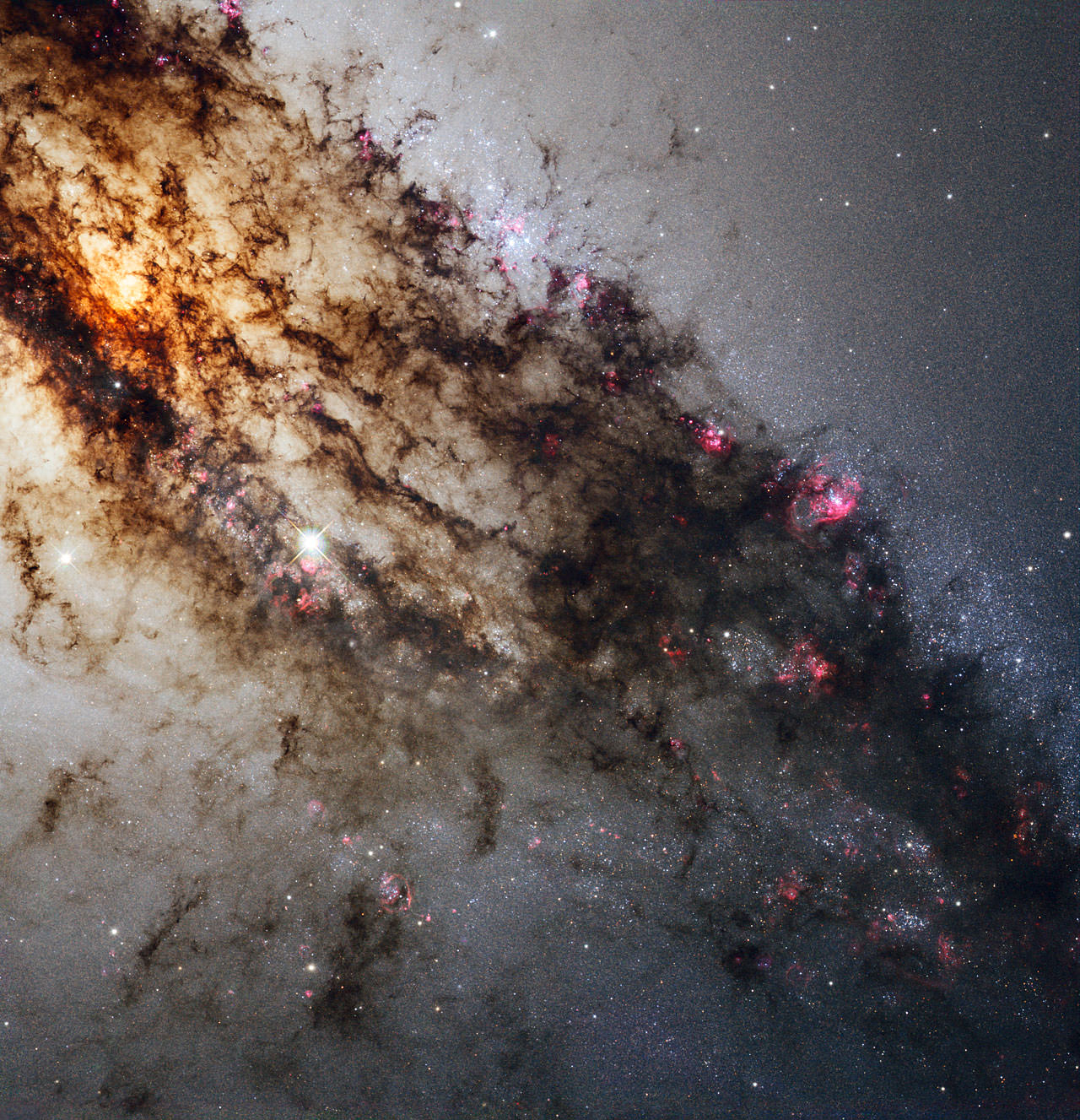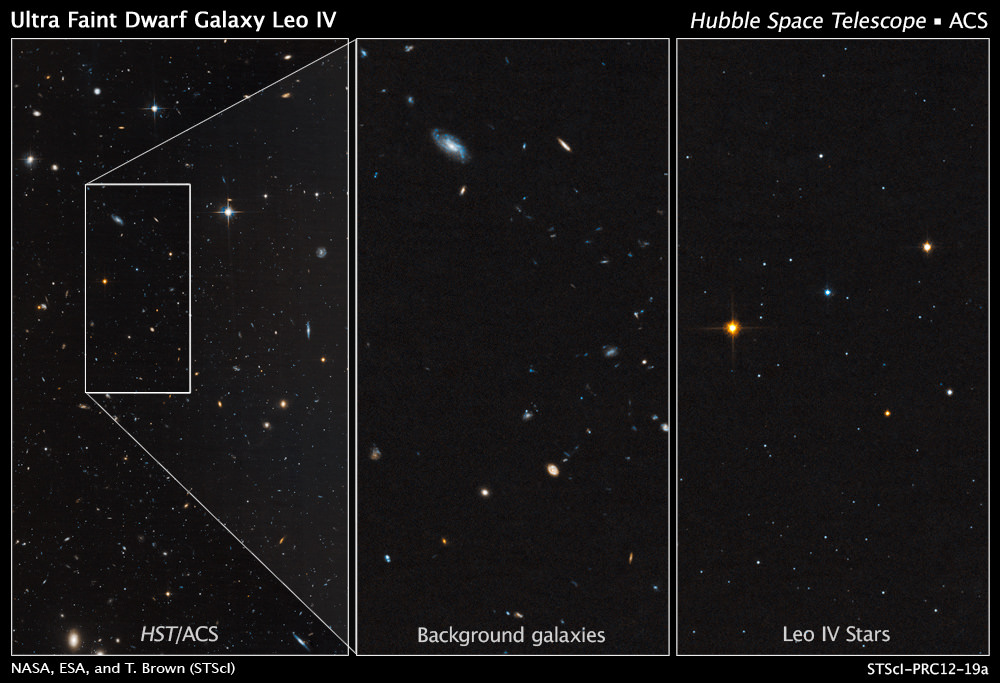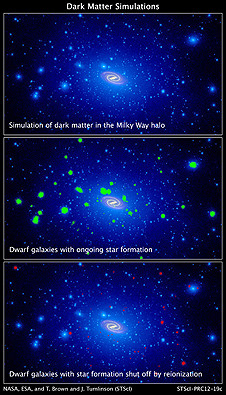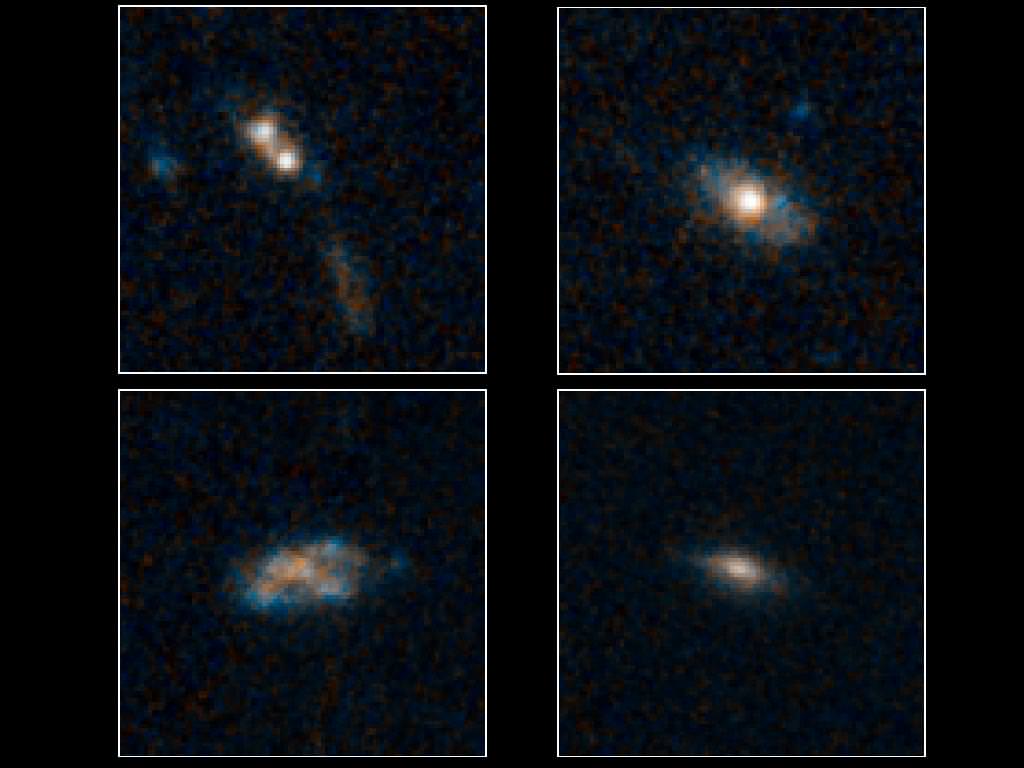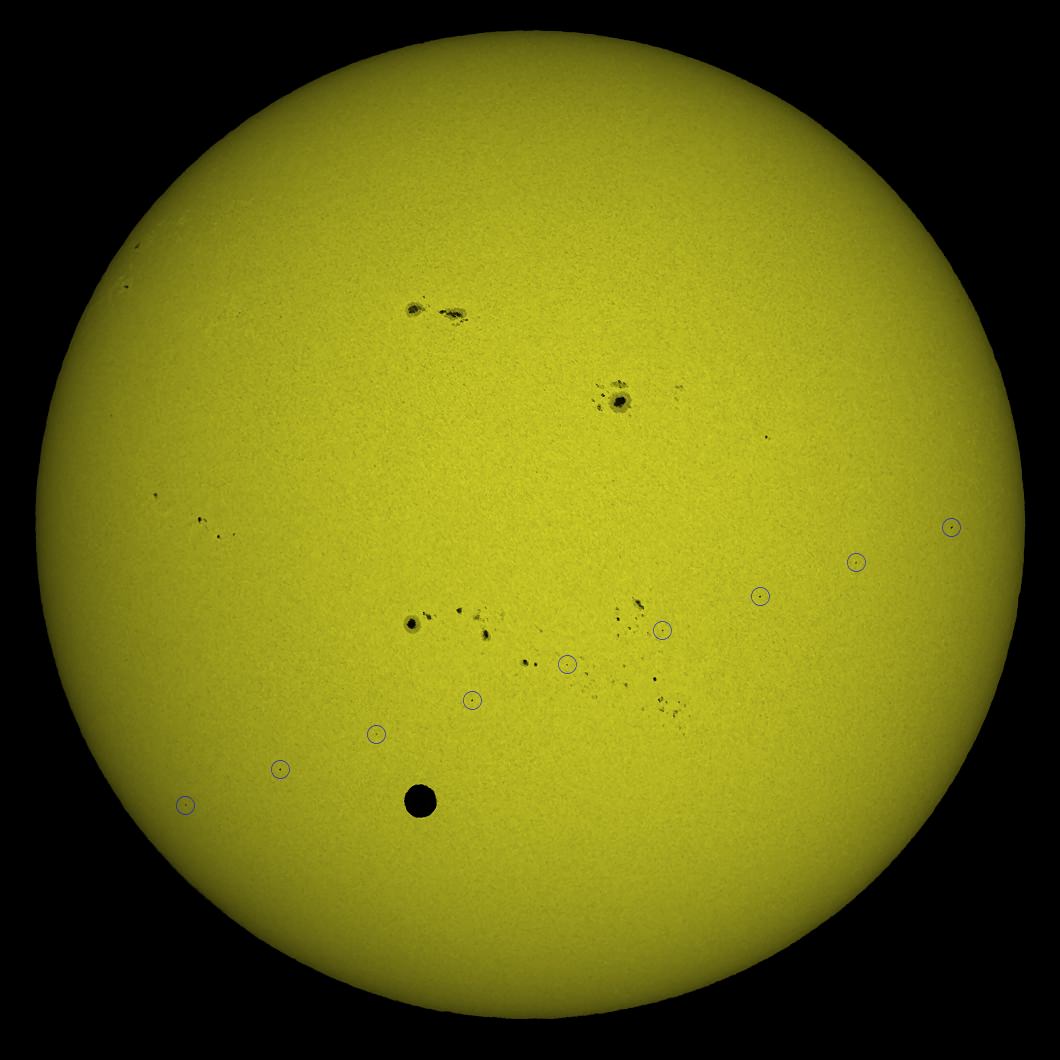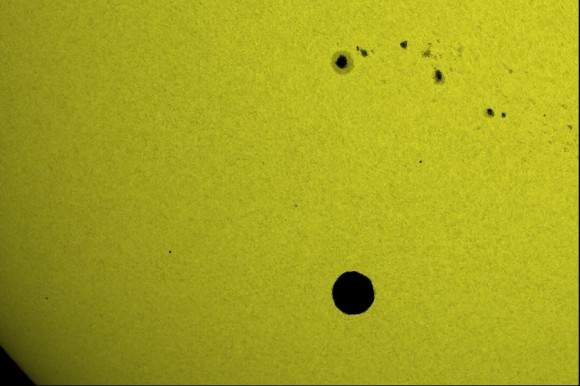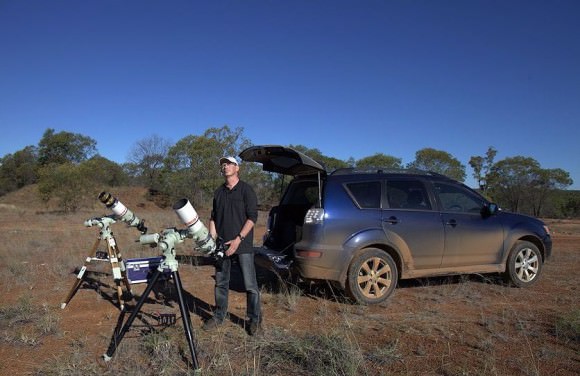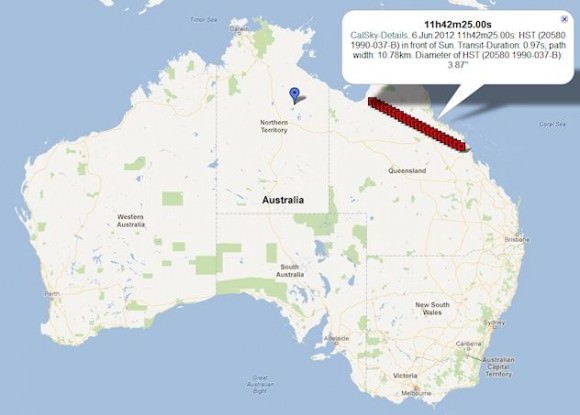The reddish object in this infrared image is ULASJ1234+0907, located about 11 billion light-years from Earth. The red color comes from vast amounts of dust, which absorbs bluer light, and obscures the supermassive black hole from view in visible wavelengths. Credit: image created using data from UKIDSS and the Wide-field Infrared Survey Explorer (WISE) observatory.
As if staring toward the edge of the Universe weren’t fascinating enough, scientists at the University of Cambridge say they see enormous, rapidly growing supermassive black holes barely detectable near the edge of time.
Thick dust shrouds the monster black holes but they emit vast amounts of radiation through violent interactions and collisions with their host galaxies making them visible in the infrared part of the electromagnetic spectrum. The team published their results in the journal Monthly Notices of the Royal Astronomical Society.
The most remote object in the study lies at a whopping 11 billion light-years from Earth. Ancient light from the supermassive black hole, named ULASJ1234+0907 and located toward the constellation of Virgo, the Maiden, has traveled (at almost 10 trillion kilometers, or 6 million million miles, per year) across the cosmos for nearly the estimated age of the Universe. The monster black hole is more than 10 billion times the mass of our Sun and 10,000 times more massive than the black hole embedded in the Milky Way Galaxy; making it one of the most massive black holes ever seen. And it’s not alone. Researchers say that there may be as many as 400 giants black holes in the tiny sliver of the Universe that we can observe.
“These results could have a significant impact on studies of supermassive black holes” said Dr Manda Banerji, lead author of the paper, in a press release. “Most black holes of this kind are seen through the matter they drag in. As the neighbouring material spirals in towards the black holes, it heats up. Astronomers are able to see this radiation and observe these systems.”
The team from Cambridge used infrared surveys being carried out on the UK Infrared Telescope (UKIRT) to peer through the dust and locate the giant black holes for the first time.
“These results are particularly exciting because they show that our new infrared surveys are finding super massive black holes that are invisible in optical surveys,” says Richard McMahon, co-author of the study. “These new quasars are important because we may be catching them as they are being fed through collisions with other galaxies. Observations with the new Atacama Large Millimeter Array (ALMA) telescope in Chile will allow us to directly test this picture by detecting the microwave frequency radiation emitted by the vast amounts of gas in the colliding galaxies.”
Huge black holes are known to reside at the centers of all galaxies. Astronomers predict the most massive of these cosmic phenomena grow through violent collisions with other galaxies. Galactic interactions trigger star formation which provides more fuel for black holes to devour. And it’s during this process that thick layers of dust hide the munching black holes.
“Although these black holes have been studied for some time,” says Banergi, “the new results indicate that some of the most massive ones may have so far been hidden from our view. The newly discovered black holes, devouring the equivalent of several hundred Suns every year, will shed light on the physical processes governing the growth of all supermassive black holes.”
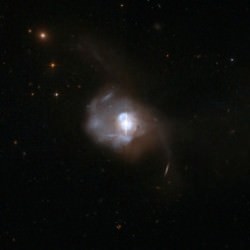 Astronomers compare the extreme case of ULASJ1234+0907 with the relatively nearby and well-studied Markarian 231. Markarian 231, found just 600 million light-years away, appears to have recently undergone a violent collision with another galaxy producing an example of a dusty, growing black hole in the local Universe. By contrast, the more extreme example of ULASJ1234+0907, shows scientists that conditions in the early Universe were more turbulent and inhospitable than today.
Astronomers compare the extreme case of ULASJ1234+0907 with the relatively nearby and well-studied Markarian 231. Markarian 231, found just 600 million light-years away, appears to have recently undergone a violent collision with another galaxy producing an example of a dusty, growing black hole in the local Universe. By contrast, the more extreme example of ULASJ1234+0907, shows scientists that conditions in the early Universe were more turbulent and inhospitable than today.
Source: Royal Astronomical Society
Image Credit: Markarian 231, an example of a galaxy with a dusty rapidly growing supermassive black hole located 600 million light years from Earth. The bright source at the center of the galaxy marks the black hole while rings of gas and dust can be seen around it as well as “tidal tails” left over from a recent impact with another galaxy. Courtesy of NASA/ESA Hubble Space Telescope.

